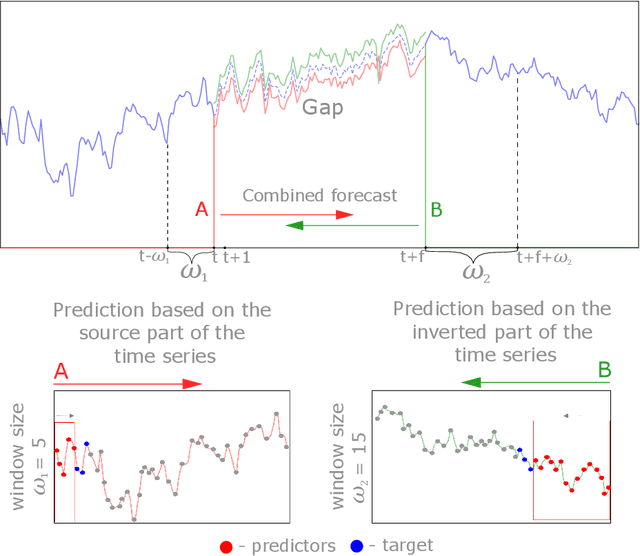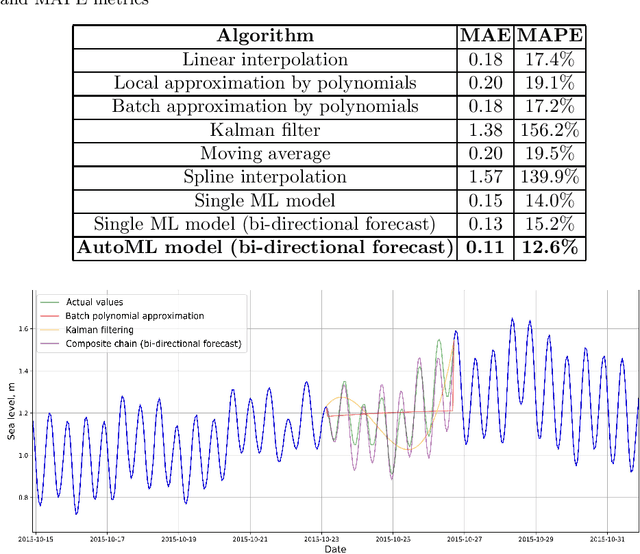Automated data-driven approach for gap filling in the time series using evolutionary learning
Paper and Code
Mar 01, 2021



Time series analysis is widely used in various fields of science and industry. However, the vast majority of the time series obtained from real sources contain a large number of gaps, have a complex character, and can contain incorrect or missed parts. So, it is useful to have a convenient, efficient, and flexible instrument to fill the gaps in the time series. In this paper, we propose an approach for filling the gaps by the evolutionary automatic machine learning, that is implemented as a part of the FEDOT framework. Automated identification of the optimal data-driven model structure allows the adopting of the gap filling strategy to the specific problem. As a case study, the multivariate sea surface height dataset is used. During the experimental studies, the proposed approach was compared with other gap-filling methods and the composite models allow obtaining the higher quality of the gap restoration.
 Add to Chrome
Add to Chrome Add to Firefox
Add to Firefox Add to Edge
Add to Edge